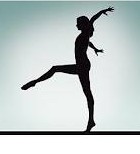The concept of balance is thrown around a lot these days. There’s the whole yin-yang kind of balance, the stability-mobility kind of balance, and then there’s traditional balance, the being steady kind. At a very basic level, this kind of balance enables you to stand and walk without falling (no easy feat considering that 80% of walking–and 100% of running–is spent balancing on one leg!). On a more advanced level, though, having good balance enables your body do everything else better–pick up a dropped coin, serve a tennis ball, run more efficiently, and hit a better golf shot, just to name a few.
Despite the common reference to one’s “sense of balance,” balance isn’t a singular sense in the way that smell or taste is. Balance is actually a function of many things working together. In particular, it’s a combination of:
- Equilibrium–more formally known as your vestibular system and often associated with the inner ear. The inner ear is very important for equilibrium, as is the back of your brain (called the cerebellum). Equilibrium problems make you feel like the room is spinning (vertigo) or like you’re on a swaying boat.
- Strength–your mid-section (the core), and your buttock (gluteus) and thigh muscles (quadriceps) are especially important for supporting you, but so too are your shin muscles (dorsiflexors) which keep you from catching your toe on the ground and tripping.
- Sensation–being able to feel the ground underneath you gives your body critical feedback for balance. Imagine trying to hold a cup with your hand if you had no feeling in your palm. It is similarly difficult to walk if you can’t feel the ground.
- Proprioception (‘pro pree o sep shun’)–a special kind of sensation that tells your brain where every part of your body is in space at every moment. That way, if your foot moves 2 cm to the right, your brain can adjust the rest of your body accordingly to keep you balanced.
- Joint Motion–good motion of the leg joints (ankles, knees, and hips) creates smooth walking and running movements. Any limitations in these joints throws off the normal movement patterns, increasing the risk of falling.
- Vision–pretty obvious and often forgotten when we think about balance, but it plays an important role. You can balance with lost vision, but it definitely makes it harder. If you’ve ever tried closing your eyes while simply standing still, you know what I’m talking about.
Ideally, you want all of these elements to be fine tuned to ensure the best balance, but obviously that’s not always possible. Some conditions, such as strokes, can cause problems with one or all of them. Other conditions such as arthritis and cataracts may affect only one or two of them. Whatever your circumstances, it ultimately comes down to doing the best you can with what you have.
The good news is that almost all of these components–particularly strength, proprioception, joint motion, and equilibrium–can be improved with training. Squats, standing on uneven or unsteady surfaces (e.g. BOSU trainers), single-leg balance exercises, and stretching go a long way in that regard. Of course, more advanced exercises or special circumstances may require more individualized instruction by a trainer or therapist. And certain conditions, such as vertigo, typically respond very well to a special kind of physical therapy known as vestibular rehab. So whether you’ve been feeling less steady than you used to or you simply want to strive for the best function possible, a little focused attention to each aspect of balance goes a long way.

